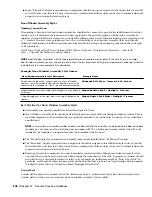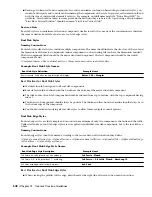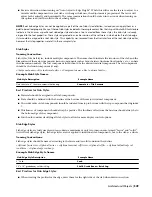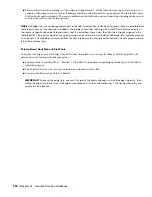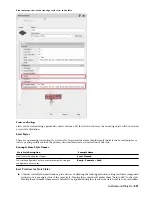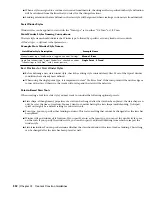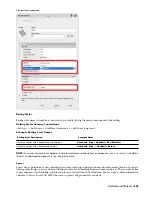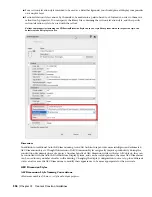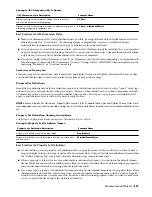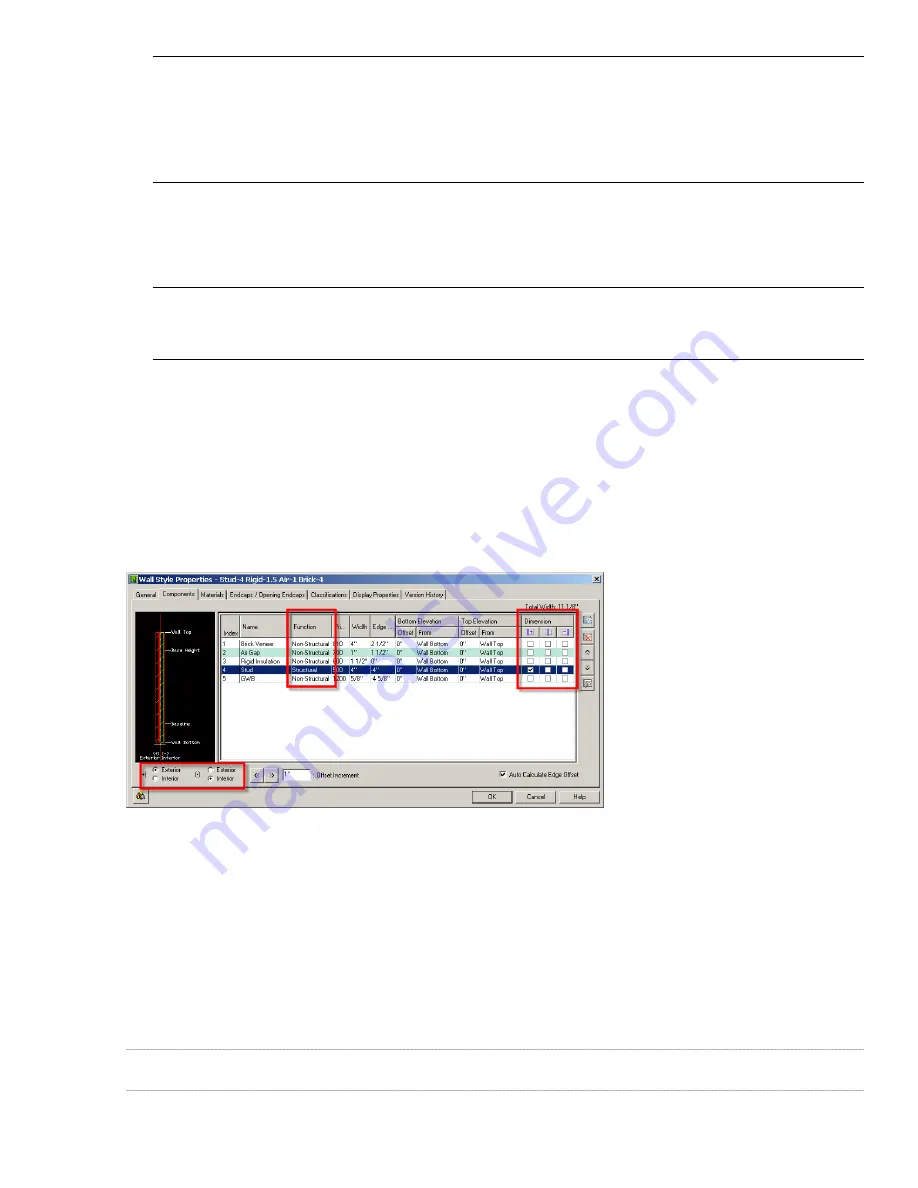
NOTE Prior to the introduction of material definitions in Architectural Desktop 2004 it was common and recommended
practice to assign wall style components to nested layers and set their color, line type, line weight and plot style settings
to “BYLAYER”. While this is still technically valid in AutoCAD Architecture 2008, it is not recommended except for a very
few exceptions (such as the “Plan Screened” display representation, which is frequently used to export plan displays to
consultants using AutoCAD, who desire the items to be on a prescribed layer and assigned colors appropriate for
background drawings).
■
Model display of wall components should be set to the drawing defaults, to allow for material assignments to
control the color and hatching of walls when viewed in non-orthogonal views.
■
Wall styles should be classified. This allows for more flexible scheduling and tagging in the future, as well as more
display control options.
NOTE The Uniformat II classification definition is supplied in the
Uniformat II Classifications (1997 ed).dwg
file located
in the
AEC Content\Styles
path. This classification definition is fairly comprehensive and in many cases serves well in
classifying all types of AutoCAD Architecture object styles according to a uniform standard.
■
Walls that have one or more obvious internal dimension points (such as the outside of a structural component)
should have those specified in the wall style “Components” tab under the “Dimensions” column. This allows for
more accurate application of AEC Dimensions.
■
Wall components should be assigned a “Structural” or “Non-Structural” designation under the “Type” column in
the “Components” tab, again to allow for more effective use of AEC Dimensions.
■
Walls should have an interior and exterior side specified as part of the wall style definition to ensure more accurate
AEC Dimensioning.
To ensure accurate dimensioning with AEC Dimensions, the wall in the following image has had it’s components assigned to either
“Structural” or “Non-Structural” types. Dimension points and the exterior/interior sides of the wall are also specified.
Wall Endcap Styles
Wall endcap styles are intended to be used with specific wall styles. They can be used to define actual end conditions
as well as opening conditions as part of a Wall Opening Endcap Style.
Naming Conventions:
Wall endcap styles should be named according to the wall style to which they apply, with an indication of the condition
they are meant to address:
<Associated wall styles> (<End condition><Index>)
Example Wall Endcap Style Names:
Example Name
Wall Endcap Style Description
Stud-3.5 Brick-3.625 Sheathing-0.5 Air-1 GWB-0.625 (End1)
For wall style Stud-3.5 Brick-3.625 Sheathing-0.5 Air-1 GWB-0.625 to
define the first end condition.
542 | Chapter 13 Content Creation Guidelines
Summary of Contents for 00128-051462-9310 - AUTOCAD 2008 COMM UPG FRM 2005 DVD
Page 1: ...AutoCAD Architecture 2008 User s Guide 2007 ...
Page 4: ...1 2 3 4 5 6 7 8 9 10 ...
Page 40: ...xl Contents ...
Page 41: ...Workflow and User Interface 1 1 ...
Page 42: ...2 Chapter 1 Workflow and User Interface ...
Page 146: ...106 Chapter 3 Content Browser ...
Page 164: ...124 Chapter 4 Creating and Saving Drawings ...
Page 370: ...330 Chapter 6 Drawing Management ...
Page 440: ...400 Chapter 8 Drawing Compare ...
Page 528: ...488 Chapter 10 Display System ...
Page 540: ...500 Chapter 11 Style Manager ...
Page 612: ...572 Chapter 13 Content Creation Guidelines ...
Page 613: ...Conceptual Design 2 573 ...
Page 614: ...574 Chapter 14 Conceptual Design ...
Page 678: ...638 Chapter 16 ObjectViewer ...
Page 683: ...Designing with Architectural Objects 3 643 ...
Page 684: ...644 Chapter 18 Designing with Architectural Objects ...
Page 788: ...748 Chapter 18 Walls ...
Page 942: ...902 Chapter 19 Curtain Walls ...
Page 1042: ...1002 Chapter 21 AEC Polygons ...
Page 1052: ...Changing a door width 1012 Chapter 22 Doors ...
Page 1106: ...Changing a window width 1066 Chapter 23 Windows ...
Page 1172: ...1132 Chapter 24 Openings ...
Page 1226: ...Using grips to change the flight width of a spiral stair run 1186 Chapter 25 Stairs ...
Page 1368: ...Using the Angle grip to edit slab slope 1328 Chapter 28 Slabs and Roof Slabs ...
Page 1491: ...Design Utilities 4 1451 ...
Page 1492: ...1452 Chapter 30 Design Utilities ...
Page 1536: ...1496 Chapter 31 Layout Curves and Grids ...
Page 1564: ...1524 Chapter 32 Grids ...
Page 1611: ...Documentation 5 1571 ...
Page 1612: ...1572 Chapter 36 Documentation ...
Page 1706: ...Stretching a surface opening Moving a surface opening 1666 Chapter 36 Spaces ...
Page 1710: ...Offsetting the edge of a window opening on a freeform space surface 1670 Chapter 36 Spaces ...
Page 1956: ...1916 Chapter 42 Fields ...
Page 2035: ...Properties of a detail callout The Properties of a Callout Tool 1995 ...
Page 2060: ...2020 Chapter 45 Callouts ...
Page 2170: ...2130 Chapter 47 AEC Content and DesignCenter ...
Page 2171: ...Other Utilities 6 2131 ...
Page 2172: ...2132 Chapter 48 Other Utilities ...
Page 2182: ...2142 Chapter 51 Reference AEC Objects ...
Page 2212: ...2172 Chapter 52 Customizing and Adding New Content for Detail Components ...
Page 2217: ...AutoCAD Architecture 2008 Menus 54 2177 ...
Page 2226: ...2186 Chapter 54 AutoCAD Architecture 2008 Menus ...
Page 2268: ...2228 Index ...



















